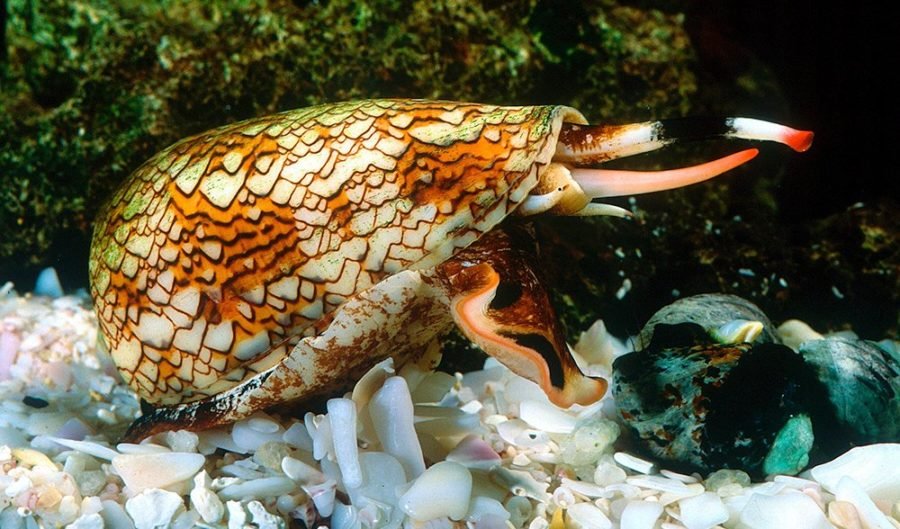Cone snail drug 100x more potent than morphine

An experimental drug made from cone snail venom has shown early signs of promise in numbing pain, raising hopes in the hunt for new, non-addictive medications, an Australian researcher says.
The drug, which has not been tested yet on humans, is judged to be about 100 times more potent than morphine or gabapentin, which are currently considered the gold standard for chronic nerve pain.
The active ingredient, conotoxin, comes from carnivorous cone snails, which are common in the western Pacific and Indian Ocean.
The marine animals can reach out and stab prey, injecting a venom that paralyses fish long enough for them to be eaten.
Cone snail venom use for experimental pain drugs
A tiny protein derived from the snail’s venom has formed the basis of five new experimental compounds, says lead researcher David Craik of the University of Queensland.
A preliminary study using one of these new compounds on lab rats “appeared to significantly reduce pain,” said a press statement released ahead of David’s presentation at an American Chemical Society meeting in Dallas, Texas.
“This is an important incremental step that could serve as the blueprint for the development of a whole new class of drugs capable of relieving one of the most severe forms of chronic pain that is currently very difficult to treat,” David said.
Cone snail venom is non-addictive
Animal venoms are poisons that can block certain channels in the nervous system, and act differently to opioid painkillers such as morphine and hydrocodone, which carry the risk of addiction and death from overdose.
Pharmaceutical companies have begun investigating venoms in recent years as potential sources of new drugs for managing neuropathic pain, which can arise from cancer, AIDS, diabetes and other debilitating diseases.
One conotoxin-derived drug, ziconotide, has already been approved for human use. However, it is not available in pill form and must be infused directly into the lower part of the spinal cord.
The five new compounds David and colleagues are developing would be taken orally.
“We don’t know about side effects yet, as it hasn’t been tested in humans. But we think it would be safe,” David said, adding that human trials are at least two years away.

